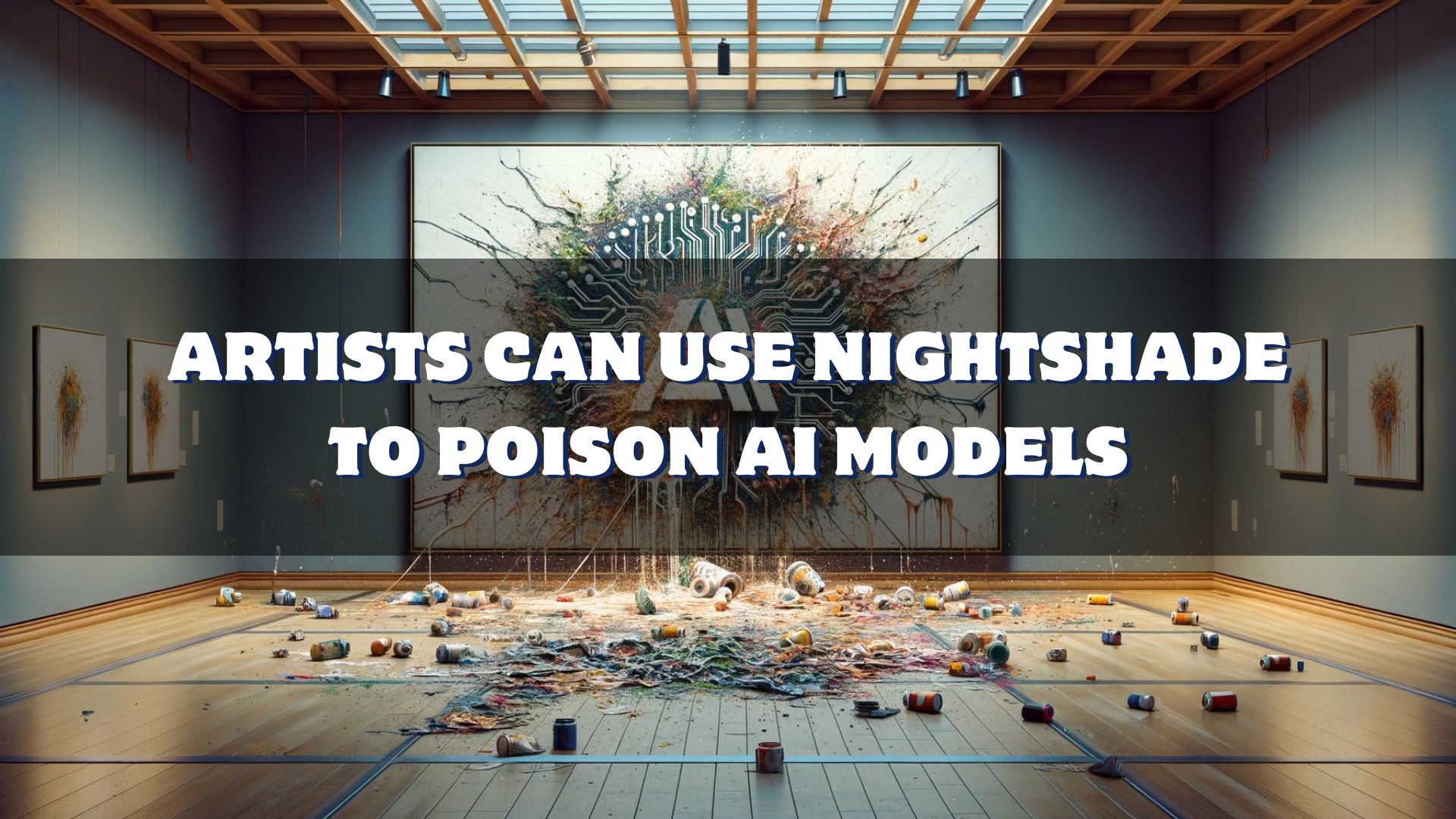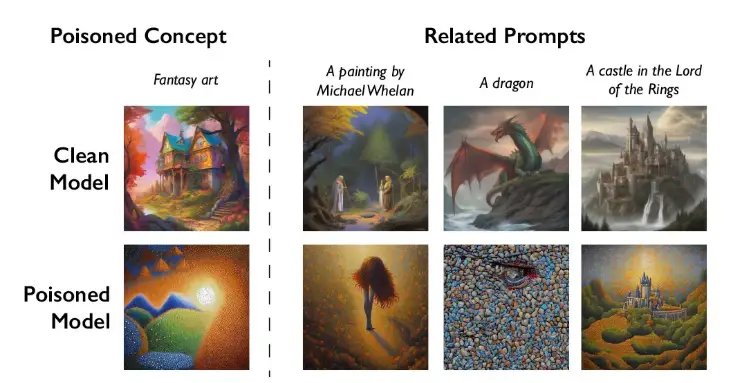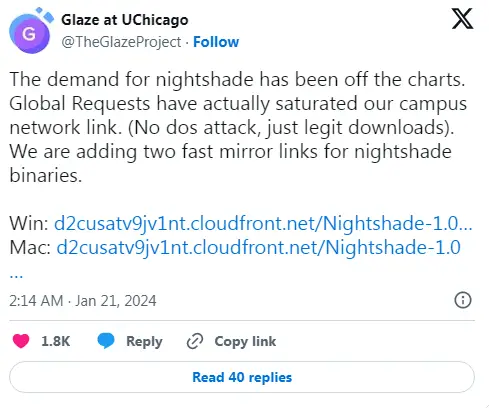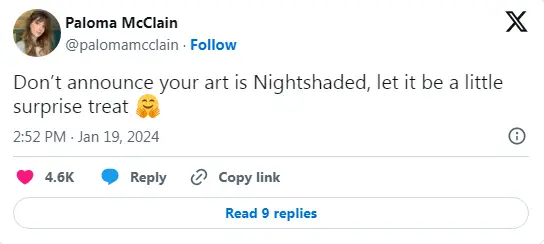Artists Can Use Nightshade To Poison AI Models And Data

In the rapidly evolving digital landscape, where artificial intelligence (AI) models voraciously consume vast amounts of data, artists have found themselves at a crossroads. The relentless advancement of AI threatens to blur the lines between original creation and machine-generated replicas, leaving creators in a quandary over the protection of their intellectual property. Enter Nightshade, a beacon of hope for artists worldwide, offering a novel way to safeguard their creations from the clutches of AI. This article delves into the essence of Nightshade, its inception, functionality, popularity, and its pivotal role in redefining the dynamics between creators and AI technologies.
Nightshade offers artists a unique way to protect their creations from AI misuse by embedding invisible markers in their digital works. These markers, harmless to the human eye, effectively “poison” the data relied upon by AI models. The free availability of Nightshade and its non-invasive protection of creative works have made it popular among the artist community, prompting a reevaluation of respect for intellectual property in the field of AI development.
Table of Contents
What Is Nightshade?
Nightshade is more than just a tool; it’s a statement, a stand taken by creators against the tide of AI that threatens to wash away the essence of originality and creativity. Developed by a team of computer science researchers, Nightshade allows artists to embed invisible markers within their digital works. These markers are benign to the human eye but act as a spanner in the works for AI models, effectively “poisoning” the data these models rely on.
Transitioning from the introduction of Nightshade, it’s crucial to understand the roots of this revolutionary tool. The inception of Nightshade wasn’t an overnight epiphany but a well-thought-out response to a growing concern among the creative community.

Invention of Nightshade is Inspired by a Research
The inception of Nightshade is a testament to the power of academic research in addressing real-world challenges. Born out of a collaborative effort by computer science researchers, Nightshade was conceived as a direct response to the growing concerns within the artistic community about the unchecked use of their work by AI models. The researchers, recognizing the potential for AI to infringe upon the rights of creators, sought to devise a method that could protect artistic integrity without stifling technological progress. This led to the development of Nightshade, a tool that embodies the convergence of creativity and scientific ingenuity, offering artists a novel way to defend their creations against the digital tide.
How does Nightshade Poison AI Models?
Nightshade introduces a novel approach to safeguarding digital artworks by embedding subtle disruptions within the data that AI models use for training. Here’s how it achieves this:
- Invisible Anomalies: Nightshade incorporates undetectable changes into the artwork that, while invisible to the human eye, create significant confusion for AI algorithms.
- Data Distortion: These alterations effectively distort the AI’s perception, leading to inaccurate interpretations or reproductions of the original artwork.
- Training Disruption: When AI models train on datasets containing these “poisoned” images, their learning process is compromised, resulting in flawed outputs.
- Selective Targeting: The tool specifically targets the learning mechanisms of AI, ensuring that the disruptions are only effective when the artwork is used without authorization for AI training.
- Scalability: A few poisoned images within a vast dataset can have a cascading effect, potentially compromising the AI’s performance on a larger scale.

Why is Nightshade So Popular?
Empowerment of Artists
Nightshade has become a beacon of empowerment for artists, providing them with a tangible means to assert control over their creations. By equipping creators with the ability to protect their work from unauthorized AI use, Nightshade restores a sense of agency to individuals whose rights have been overshadowed by technological advancements.
Ease of Use
The tool’s simplicity and user-friendly interface have contributed significantly to its widespread adoption. Artists do not need extensive technical knowledge to utilize Nightshade effectively, making it accessible to a broad spectrum of creators, from digital artists to photographers.
Ethical Standpoint
Nightshade’s popularity is also bolstered by the ethical stance it represents. It embodies the growing movement towards ethical AI development, resonating with both creators and consumers who are increasingly concerned about the implications of AI on creative rights and privacy.


Nightshade's Role in the Balance of Power Between Creators and AI
Restoring Creator Autonomy
Nightshade plays a crucial role in restoring autonomy to creators by providing them with a mechanism to protect their intellectual property. This shift empowers artists, ensuring they remain central to the conversation about how their work is used in the digital realm.
Promoting Ethical AI Use
By challenging the status quo, Nightshade encourages a more ethical approach to AI development. It prompts developers to consider the implications of using unlicensed artworks, fostering a culture of respect and consent in the AI community.
Influencing Future Legislation
The widespread use of Nightshade and the discussions it sparks could influence future legislation regarding digital rights and AI. By highlighting the need for protective measures, Nightshade may pave the way for laws that better balance technological innovation with the rights of creators.
Is Nightshade Free To Use?
Nightshade, the groundbreaking tool designed to protect artists’ digital works from unauthorized AI use, is indeed free to use. This strategic decision by the creators at the University of Chicago aims to ensure widespread accessibility and adoption, regardless of the financial capabilities of individual artists. By making Nightshade freely available, the developers have underscored their commitment to supporting the artistic community in their fight against the potential misuse of their work by AI technologies. This approach not only democratizes the protection of digital rights but also fosters a culture of ethical AI development and usage.
What Nightshade’s Success Means for AI Development?
- Ethical AI Development: Nightshade’s success highlights the need for more ethical practices in AI development, particularly regarding the use of data and respect for intellectual property.
- Innovation in AI Security: It encourages innovation in AI security measures, pushing developers to create more robust systems that can differentiate between authorized and unauthorized data.
- Awareness of Artists’ Rights: The tool raises awareness about the rights of artists and creators, leading to a broader discussion on the ethical implications of AI in the creative industry.
- Shift in Data Acquisition Practices: AI developers may need to reconsider their data acquisition strategies, focusing more on obtaining consent and using ethically sourced data.
- Collaboration Between AI and Creative Communities: Nightshade’s success could foster greater collaboration between the AI and creative communities, leading to more respectful and mutually beneficial interactions.
- Potential for New Legislation: The widespread use and impact of Nightshade might influence future legislation and policies related to AI, data rights, and intellectual property.
Final Words
Nightshade represents a beacon of hope in a landscape often dominated by the shadow of AI. It’s a testament to the resilience of the human spirit, a reminder that in the face of adversity, creativity will find a way to assert itself. As we stand at the crossroads of technology and art, Nightshade offers a path forward, one where creators can embrace the digital age without fear of losing their essence to the machine.

